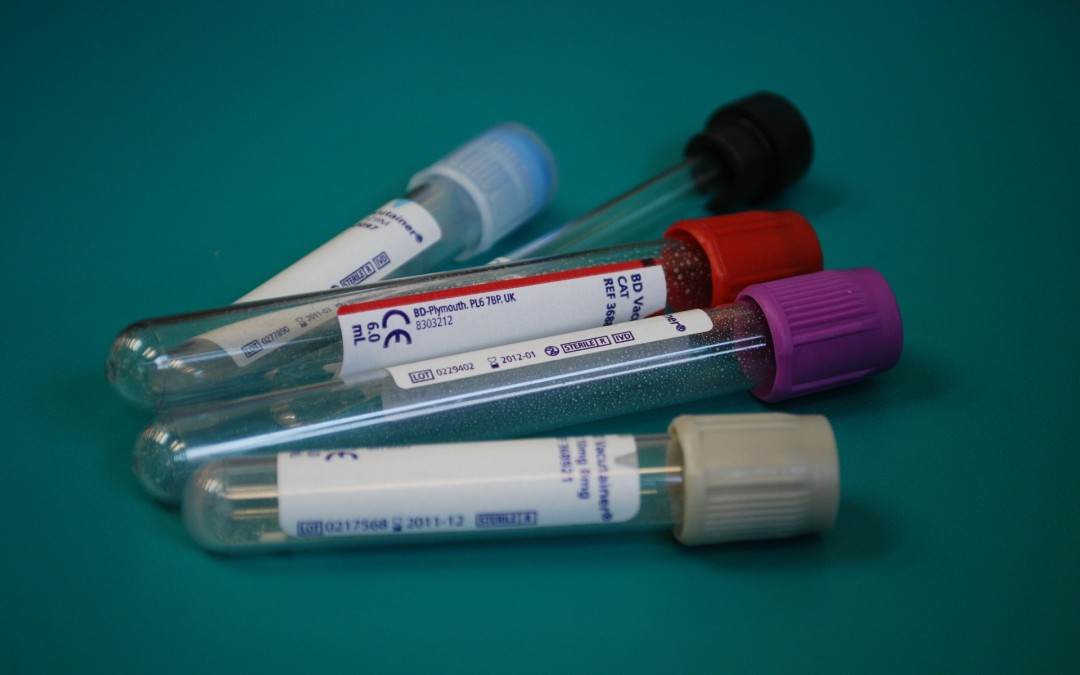
by drmiranda | Sep 1, 2015 | blood test, fatigue, health, hypothyroid, inflammation, insulin resistance, not losing weight, obesity, weight loss
You’ve heard about preemptive strikes, how about preemptive health? Don’t wait until you are really sick to get blood work drawn. Have it drawn at your yearly physical and keep a copy for your records. You OWN your medical records, by the way, your physician is just the custodian of them – so you are legally entitled to a copy of anything contained within it.
PREEMPTIVE HEALTH: What Blood Work to Request from Your Doctor
I get a lot of requests from people asking what blood tests they should request at their next medical appointment. Along with getting a standard Chemistry Panel and Complete Blood Count (CBC) which should include RBC Magnesium and RBC Potassium , here are the ones I commonly recommend for women. Men would have a few slight differences.
1) Complete Thyroid Panel :
TSH (many doctors only test TSH, and that is like trying to diagnose what is wrong with your foot by only looking at your big toe)
Free T3 (also known as: Triiodothyronine, Free)
Free T4, Direct S (Not Free T4 Index, Free T4 calculated, or TSH reflux)
Reverse T3 (If your doctor will do this and/or if it’s available in your country)
***Because this test includes a TSH screening, remember that medications like corticosteroids, aspirin and lithium can interfere with those results. Also, if you’ve had a recent X-ray that used iodine dye – or other radioactive tests – ask your doctor when you can take an accurate TSH test. Pregnant women in their first trimester should also ask their doctor about the proper time to get a TSH test.
If you have symptoms of hypothyroidism and/or Hashimoto’s Disease, add these :
Thyroid Peroxidase Antibody (TPOab)
Anti-Thyroglobulin (TgAb)
If you have symptoms of hyperthyroidism (much less common), add these:
Thyroid Stimulating Immunoglobulin (TSI)
Thyroid Receptor Antibody (TrAb)
2) Iron panel:
Serum iron
Total Iron Binding Capacity (TIBC)
%Saturation
Ferritin
3) Vitamins:
B12
D3
4) Sex Hormones (serum blood):
Testosterone
Estradiol
Progesterone
FSH
LH
DHEA
***The sex hormone tests should be done 7 days after ovulation. If you don’t know when you ovulate, an ovulation kit can be purchased from a drugstore, or you can just test on day 21, if you still menstruate. If you no longer cycle, the tests can be done anytime.
5) Other tests:
C-Reactive Protein (systemic inflammation marker)
Cholesterol panel ( I don’t care if it is high, I look at the ratios, and your CRP level^^^)
Fibrinogen (clotting & inflammation marker)
Hemoglobin A1C (long term measure of glucose status)
Homocysteine ( risk for coronary artery disease, fractures, and other disorders)
################################################################################################
A) If you have ANY chronic health conditions, I recommend getting an ELISA Food Sensitivity and Allergy Panel done. It is an easy way to identify what you consume that is contributing to your systemic inflammation. Most family doctors do not perform these tests, you will need to go to someone familiar with them. ALCAT and ALLETESS are the two brands of testing that I have used with my patients. Their respective websites can help you locate a practitioner who is versed in them www.alcat.com , www.foodallergy.com
B ) If you have symptoms of low cortisol/ or adrenal fatigue, then salivary cortisol tests should be considered. Cortisol levels: 24-hour saliva cortisol tests from Canary Club and MyMedLab are done through ZRT Laboratories: http://www.canaryclub.org/diurnal-cortisol-4x-stress-hormone-kit.html ($119+shipping) or https://sttm.mymedlab.com/sttm-profiles/sttm-24-hour-cortisol-dhea ($125)
Symptoms of low cortisol: http://www.stopthethyroidmadness.com/adrenal-info/symptoms-low-cortisol/
C) Educate yourself! Read up on what you are experiencing: Books I highly recommend: Type II Hypothyroidism, Dr. Mark Starr; Stop the Thyroid Madness, Janie Bowthorpe; What is Your Menopause Type? Joseph Collins ; Death to Diabetes, DeWayne McCulley, The Blood Sugar Solution, Dr. Mark Hyman; The Adrenal Reset Diet, Dr. Alan Christianson; Hashimoto’s Thyroiditis, Wentz & Nowasadzka.
©2015, MirandaJorgenson, www.mirandajorgenson.com

by drmiranda | Jul 15, 2015 | blood supply, diet, dietary supplements, fat breakdown, fatigue, health, insulin resistance, lipolysis, not losing weight, plateau, walking, water retention, weight gain, weight loss
This is an aspect of weight loss that perplexes a lot of people – they start a new diet and notice their clothes getting looser, or their face getting thinner – but their weight is staying the exact same! It is frustrating, because you *think* your diet is working but you step on the scale and feel like a big old failure.
Well, I am here to tell you that you can relax! You are not a failure! You are experiencing the wonders of the fat cell in action (I can hear you saying, “big whoop — skinny thighs are what excites me!”).
Let’s start off with a little physiology lesson. In your body you have 10-30 billion fat cells, and that is if you are of a healthy weight. Overweight people can have 75 billion fat cells or more, and it is not unheard of for morbidly obese people to have 250-300 billion fat cells overwhelming their boney frames! That is a LOT of fat cells (adipocytes). Picture each fat cell like a little deflated balloon. That balloon can be relatively empty or filled to the brim and be stretched over 10x its normal size. Now these fat cells are stubborn creatures – you can always make more, but once you have them, they are yours for good. Up until very recently1, it was thought that the only way to get rid of fat cells was to cut them out, but you can deflate them — and this is the key to losing weight effectively.

You see, fat cells are little storage tanks, and despite your most heartfelt desires to the contrary, they are remarkably efficient at storing fat in the form of triglycerides within the cell. When we want to burn fat – it isn’t an easy matter of having your brain tell your body, “we need more energy – let’s burn that love handle”. It doesn’t work that way! We need two enzymes, hormone sensitive lipase and adipose glyceride lipase to break down the triglyceride within fat cell where it is then released into the bloodstream as FFA’s. The more blood supply an area has, the better it can whisk away those FFA’s that are getting dumped from the fat cells. You can see this on your own body — take a second and poke your facial cheeks. See, the fat there is nice and soft because it has a good blood supply. Now grab the fat on your belly or on your butt. Feel the difference? It is dense and hard. It doesn’t have a good blood supply to whisk fat away. This is why when you start losing weight, it usually leave the ‘soft’ places first – your face, breasts, and arms and leaves you feeling like a saggy humpty dumpty for a while. This blood flow issue also leads us to our key point – when you start a diet and are burning fat, the scale often stays immobile despite you noticing that you are shrinking. This happens because the body abhors a vacuum. When the adipocytes dump out their fatty contents, your body doesn’t like to see an empty cell – so it shuttles water into the cell to fill up the space the fat just occupied. This is also why fat loss can be considered an inflammatory process and why you often feel bad, tired, sick, or swollen when you are dieting (there are other chemical factors, but we will discuss those at another time). Your body is literally replacing the fat with water! This process is more extreme for some people than for others, and some fortunate souls experience very little of this water replacement. This is also why your stomach or thighs can feel mushy or spongy when you are losing weight – you are replacing a dense fat with water.
So, what you can do, especially if you know that you have resilient fat or are a water hoarder? Well, there are a few simple things:
- Stay hydrated. I know, you’re thinking, “Why put more water into a swollen body?”, — Well, you need to flush out the metabolites from breaking down those FFA’s.
- Limit Caffeine and Alcohol. A little of either substance is OK, and small doses of caffeine can even be beneficial because it has a mild diuretic effect. Large amounts of either (and by large I am referring to more than 3 caffeinated beverages or more than 1 glass of wine or beer each day) can cause you to swell up like a balloon at the Macy’s Day Parade AND make your hard-earned weight loss come to a grinding halt.
- Shake your booty. Yes, I said it. The largest lymphatic pump in your body is the quadriceps muscles in your legs, so anything that gets those quads pumping — like walking, dancing, or biking, increases your lymph flow and your blood flow. If you work yourself up to a decent exertion point, then you will really increase systemic blood flow, and breathing (and breathing is the means by which your body excretes the metabolites of burnt fat cells!). Dig out those Richard Simmons’ shorts you’ve been hanging onto for the past 20 years — (they are back in style) and get ‘Sweatin’ to the Oldies!’
So there you have it! Know that you are not hallucinating – your face is thinner, your breasts are shrinking, and those bingo wings are real. Your scale just hasn’t caught up with your body! The more you follow the above steps – the faster you will purge that excess water (and inflammation) and the scale will start moving in the right direction.
1.http://www.nytimes.com/2008/05/05/health/research/05fat.html?_r=0


